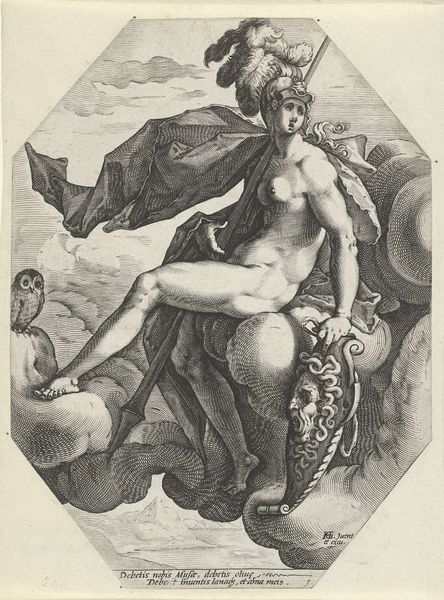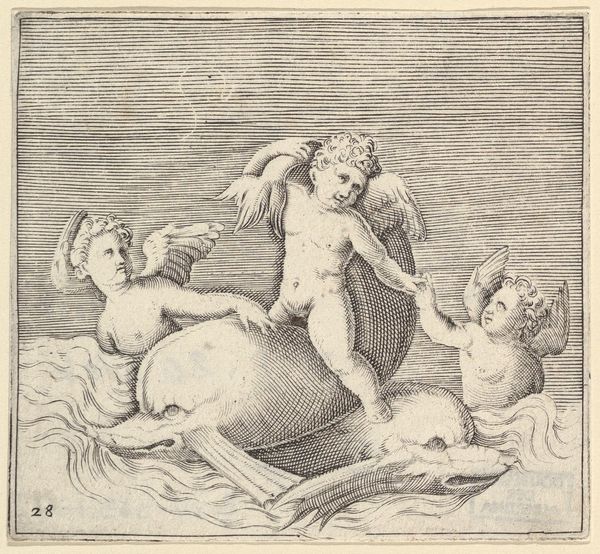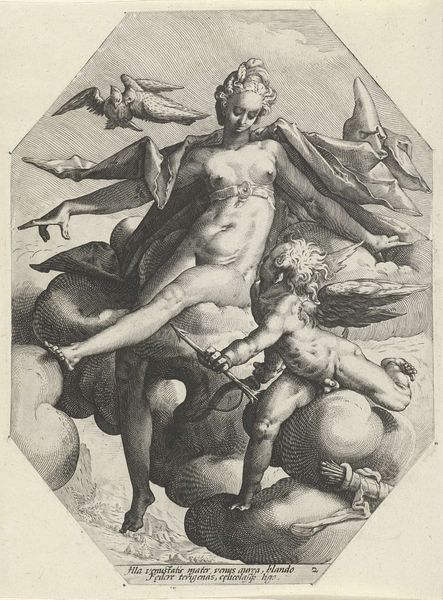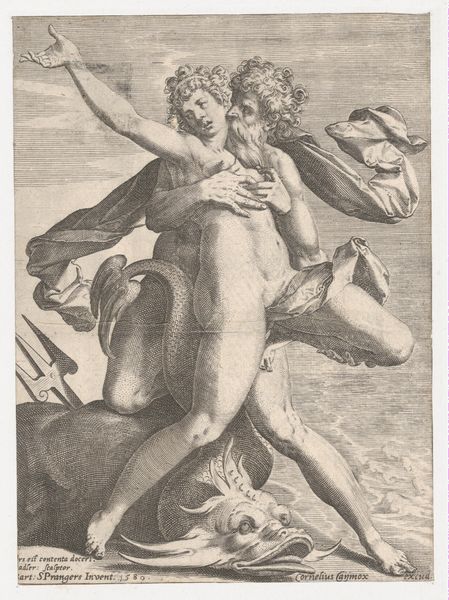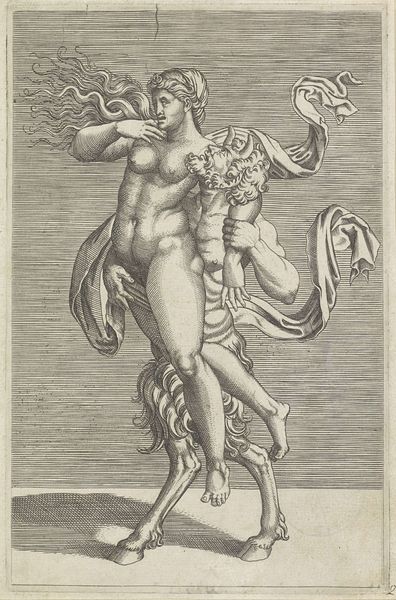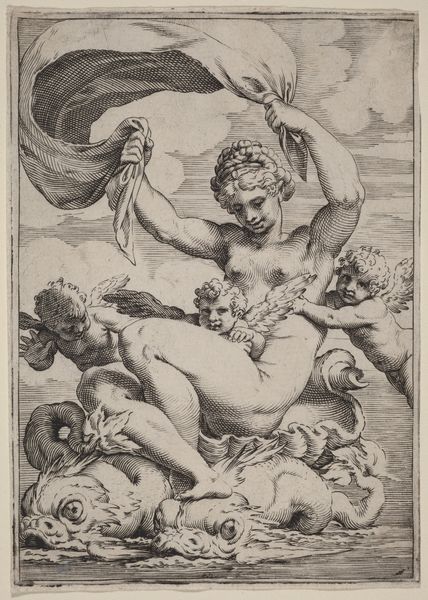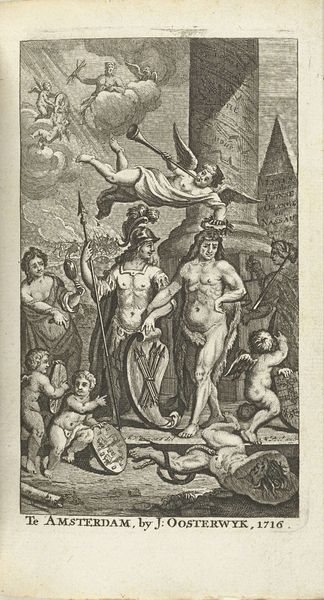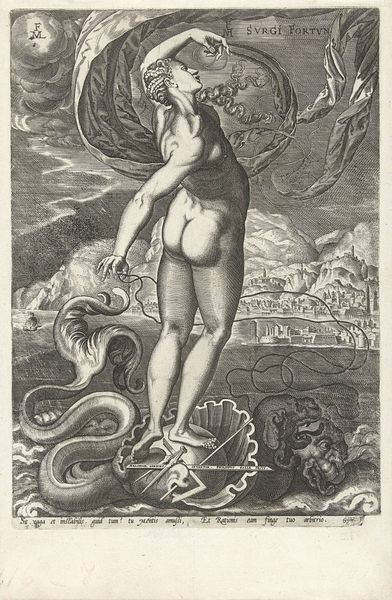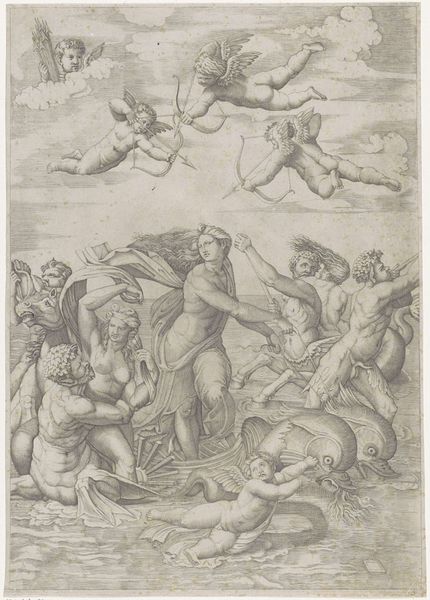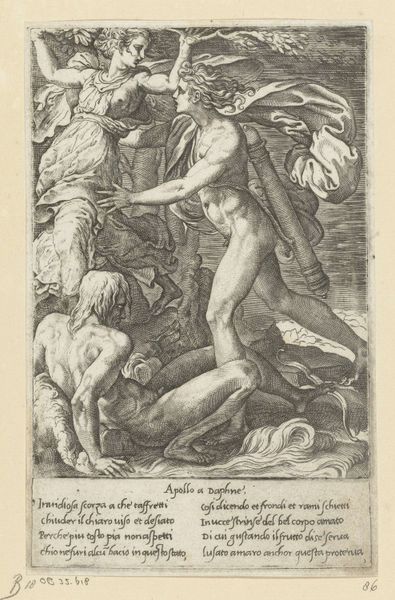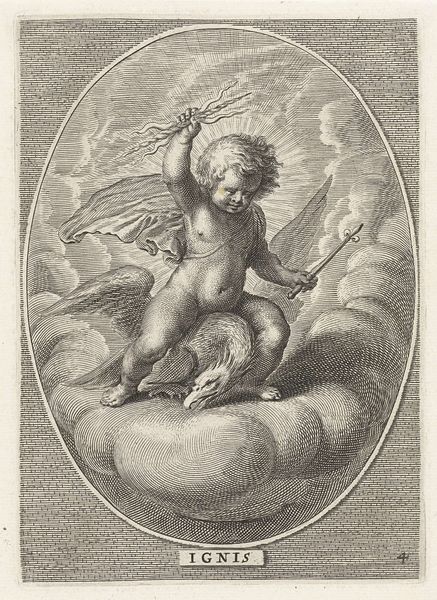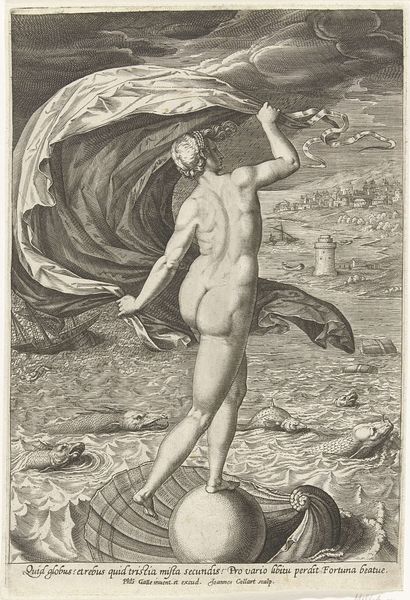
Venus door de wind meegevoerd op haar schelp op zee 1590 - 1633
0:00
0:00
boetiusadamszbolswert
Rijksmuseum
print, engraving
#
allegory
#
baroque
# print
#
figuration
#
nude
#
engraving
Dimensions: height 250 mm, width 195 mm
Copyright: Rijks Museum: Open Domain
Editor: This is "Venus door de wind meegevoerd op haar schelp op zee" created by Boëtius Adamsz. Bolswert, sometime between 1590 and 1633. It’s an engraving, currently held at the Rijksmuseum. The figures are elegant but the scene strikes me as somewhat melancholic, especially with the subdued tones and the goddess's almost weary expression. What's your interpretation? Curator: It’s fascinating how you perceive that melancholy. I see this piece speaking to the Baroque era’s complex relationship with beauty and power, but also with gender and mythology. Think about Venus, the Roman goddess of love, often rendered as a symbol of idealized femininity. Yet, here, she is nude, exposed. Do you think her weariness might be a comment on the burden of such an ideal? Editor: That's an interesting angle. The weight of expectation perhaps, represented by the cherubs tugging at her veil. I hadn't considered the engraving's commentary on the goddess herself, rather than just the scene. Curator: Exactly. And the seashell, a traditional symbol of female fertility, can be re-examined. Is it a vessel of empowerment or does it also imply confinement? How does this echo the patriarchal constraints women faced at the time this print was produced, even those elevated to mythological status? Consider how often the female nude throughout art history becomes a site of projected meaning by male artists. Editor: So, beyond the surface-level beauty, Bolswert might be subtly critiquing the societal expectations and limitations placed upon women, even goddesses, in his era? It reframes how I initially saw the piece. Curator: Precisely. And it encourages us to ask whose perspective are we truly seeing. What assumptions do we bring with us? Editor: This makes me realize how crucial it is to question not only what the artwork depicts, but also what it implies about the culture that produced it. Thank you! Curator: It’s about creating space for intersectional narratives to emerge.
Comments
No comments
Be the first to comment and join the conversation on the ultimate creative platform.
